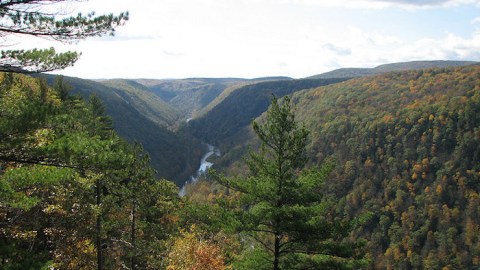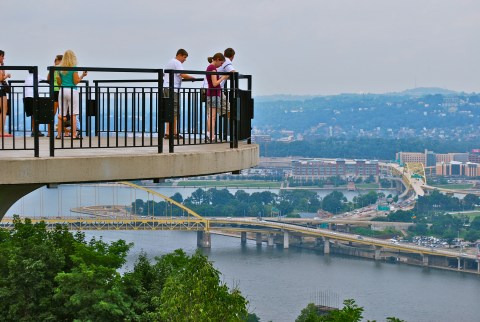10 Of The Most Enchanting Man Made Wonders in Pennsylvania
There are tons of unbelievable natural wonders in Pennsylvania, but what about the man made ones? Sure, we might not have Mount Rushmore, but there are some architectural wonders that call PA home. From bridges, to dams, to towers and more, here are some of the most incredible man made wonders in our state.
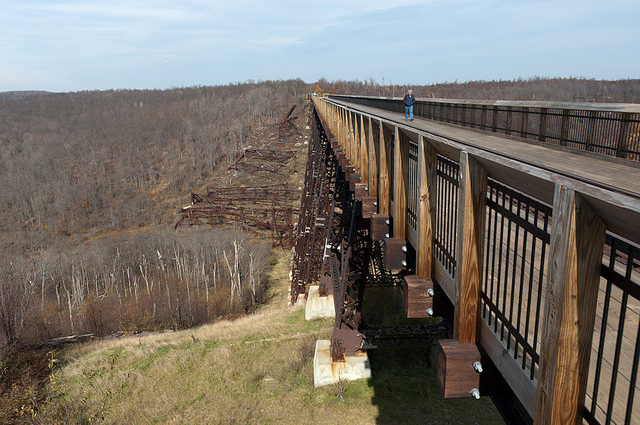
When the Kinzua Bridge was first constructed in 1882, it was hailed as the Eighth Wonder of the World. It was originally built from iron, and twelve years later reconstructed with steel. For two years, it held the record as the tallest railroad bridge in the world. In 2003, a tornado destroyed much of the Kinzua Bridge and today it exists as a tourist attraction at Kinzua Bridge State Park. Part of the bridge was reconstructed to allow visitors to walk out and view the gorge, where the remains of the collapsed bridge lie.

The Concrete City was built in 1911 for coal mine employees and their families in Luzerne County. The houses were made out of poured concrete; the people who lived here complained of constant dampness that seeped through the walls, not to mention the complete lack of a sewer system. The Glen Alden Coal Company eventually took over the property and didn't have interest in paying to maintain the small village; because of the buildings' construction, though, they couldn't be demolished. By 1924, the village was completely deserted, and it still stands, in disrepair, to this day.
Advertisement

Fonthill Castle, like Concrete City, was also constructed using the poured-in concrete method, but is a much more successful example of this architectural style. The construction of the castle began in 1908 and ended in 1912; it was the home of Henry Mercer, an important anthropologist and tile maker of the region who was also responsible for the nearby Moravian Tile Works and Mercer Museum. Crowning glory of Doylestown, Fonthill Castle has 44 rooms, 18 fire places, and over 200 windows.
Advertisement
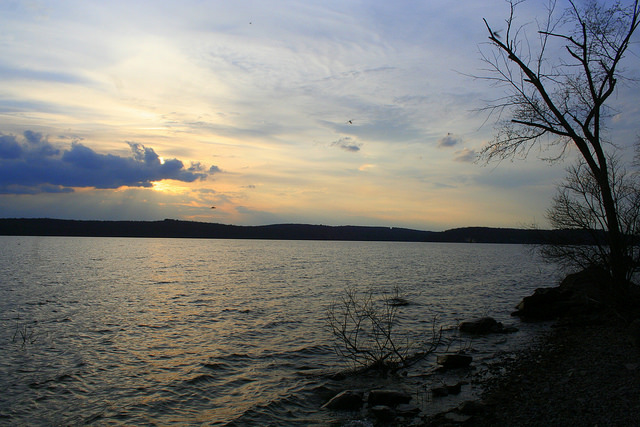
Lake Wallenpaupack is not only the third largest lake in Pennsylvania and a huge recreational destination in the region, but it is also entirely man-made. Coming in at 13 miles long and over 60 feet deep at points, that's impressive. PPL built the lake in 1926 for hydroelectricity and flood control. It took two years to complete the construction of the dam and dike for the lake, and an additional seven months for it to fill with water. The entire former town of Wilsonville lies below the surface of Lake Wallenpaupack.
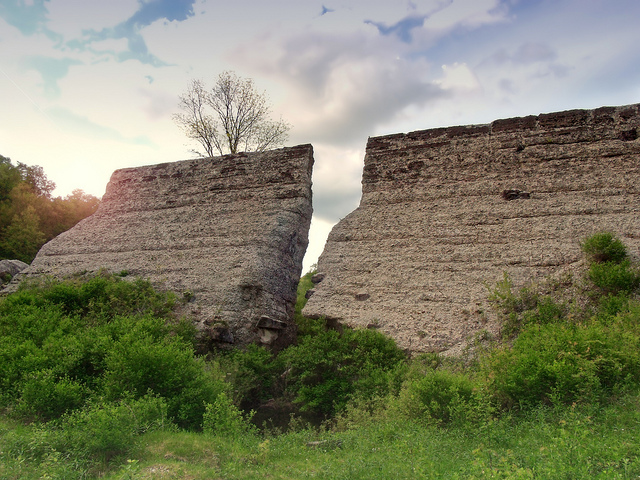
The Austin Dam is one of the most notable failed man-made structures in the state. It was built in 1909 by the Bayless Pulp & Paper Mill in Austin, to provide a stable water source during the dry season. The dam was barely completed before its structural problems became apparent; it would noticeably bow under the pressure of water. Officials at the paper mill shrugged and blasted a small, 13-foot reservoir into the dam to relieve some of the pressure, but this measure was ultimately ineffective. In 1911, the dam failed, and the released flood of water destroyed the paper mill and much of Austin itself, resulting in the deaths of 78 people. Today, the remains of the dam stand as a reminder of the tragedy.
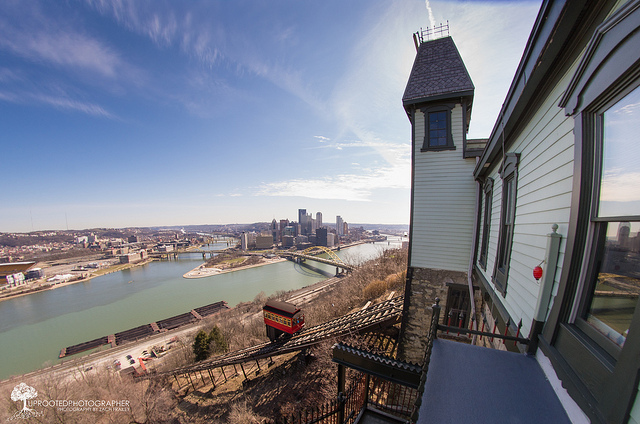
The Duquesne Incline is one of the top visited tourist attractions in Pittsburgh because not only is the structure itself cool, but it offers the absolute best view of the city. The 30-degree inclined railroad was completed in 1877. It was originally steam powered, and built to carry cargo and tired residents up Mount Washington. Today, it is a flourishing tourist attraction.
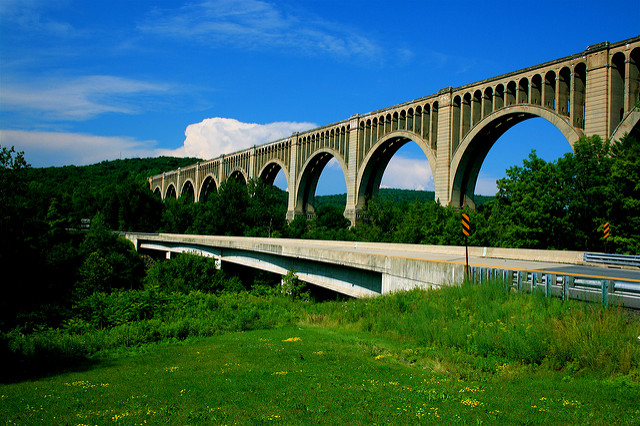

When its construction was completed in 1915, the Tunkhannock Viaduct— also known as the Nicholson Bridge— was the largest concrete structure in the world. It remained the longest concrete bridge in America (if not the world) for decades after this. Above is a picture of its construction as it stood the year before its completion; though the bridge is massive to the naked eye, most of its bulk is underground.
Advertisement

Fallingwater is one of Pennsylvania's most coveted architectural treasures. Built by Frank Lloyd Wright in 1935 as a home for the Kaufmann family, its coolest feature is that the entire structure appears to levitate above a waterfall. It was named the "best all-time work of American architecture" by the American Institute of Architects in 1991.
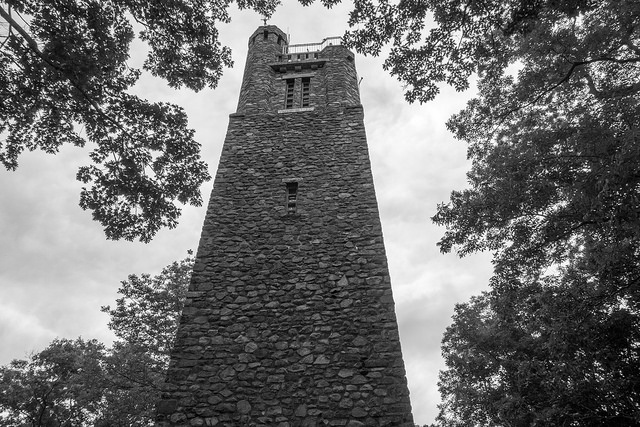
The 125-foot tall Bowman's Tower stands in the middle of Washington Crossing Historic Park in Bucks County. The view from the top is nothing short of incredible; the tower was built in 1931 as a memorial, although no one is certain to whom the memorial was originally erected.
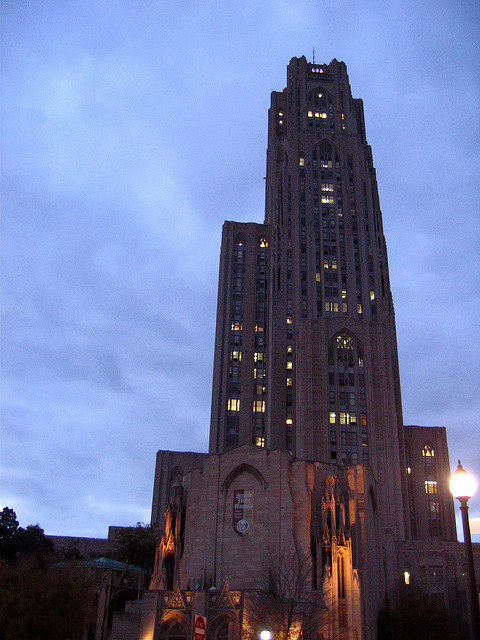

Most students at University of Pittsburgh have a few classes in the Cathedral of Learning during their time at the university. It is the second-tallest academic building in the world, the home of some peregrine falcons, and known for looking strikingly like Hogwarts. It is also the second-tallest building in the world built in a gothic style. The Cathedral is 42 stories tall.
What would you add to this list? Share your ideas below and thanks for reading!
OnlyInYourState may earn compensation through affiliate links in this article. As an Amazon Associate, we earn from qualifying purchases.


